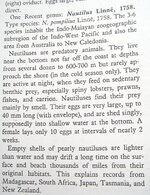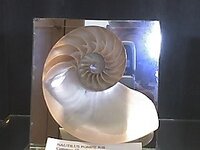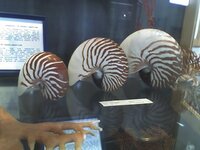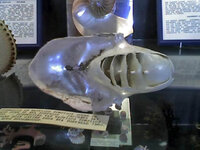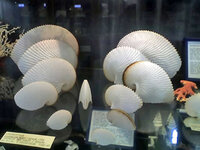squider;101313 said:
Hi all again.
I have just heard from a fellow skipper that he has found the type with the smooth hard shell and with the flap that closes the front part....the plot thickens?? Looks like this could be the Pompillius,anyone know if this is common on the S A coastline?
According to House's article in Saunders & Landman (eds)
Nautilus, it would be very unusual to find a living nautilus (not counting the argonauts) near Africa. The map shows that only two living animals have been reported in that area, both East of Madagascar (specifically, the Seychelles and Mauritius). However, because the shells float in ocean currents, it's not too unusual to find the washed up shells on the African East and South coasts. Do you know if your skipper found a live animal, or just the shell?
My book is a bit old (1987) but cephbase doesn't seem to have any newer articles about nautilus distribution. Oh, and it did remind me that some references use "chambered nautilus" to describe the actual nautilus, and "paper nautilus" to describe argonauts.
One the major differences between nautilus and argonauts is that the nautilus shell has chambers permanently filled with gas, which it uses to remain neutrally buoyant in the water. The argonauts, on the other hand, don't have sealed shells, and the shells are primarily for keeping their eggs safe (only female argonauts have shells at all). Although they do use air in the shells to float at the surface, they don't have a complicated system to keep a fixed amount of air in the shell the way nautilus does... in fact, I read somewhere (I think I referenced it in the thread above) that if the air is removed from the shell, the argonaut can replace it somehow, so it's possible that they can deliberately empty the shell to dive down where they get caught on your jiggs.
I seem to remember that the females build the shells somewhat before they lay their eggs in them, but that the floating lifestyle is primarily after they've layed their eggs... most octopuses stop feeding after egg-laying, so perhaps the ones you see on the surface are carrying eggs, and the ones you catch on your jiggs aren't yet.
I've read about groups floating on the surface in chains, but I don't know if they ever deliberately use the winds as you suggest... it would certainly be fascinating if they can.
The TOLweb page
Argonauta has some interesting pictures, including the only one I've seen of a male argonaut... do you ever see those on your jiggs, or are they too small to catch?

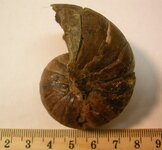
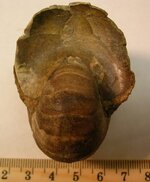
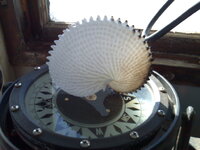
 to TONMO!
to TONMO! 
 Looks like im hooked,or jigged ?
Looks like im hooked,or jigged ?